The F5 101 – Application Delivery Fundamentals exam is the first stepping stone for network engineers aiming to become F5 Certified BIG-IP Administrators. This foundational exam validates your understanding of essential networking concepts, protocols, and F5 technologies. Passing F5 101 not only earns you a certification but also proves you have the baseline skills to manage application delivery in modern networks. In this article, we’ll break down what the F5 101 exam entails, why it’s valuable for your career, and how to prepare effectively – including study tips, resources like SPOTO dumps, CLI command practice, and a sample study timeline – to ensure you pass on the first attempt.
Table of Contents
Understanding the F5 101 Exam Basics
What is the F5 101 exam? The F5 101 (Application Delivery Fundamentals) is an entry-level exam that covers the core concepts of application delivery and load balancing. It consists of ~80 multiple-choice questions to be completed in 90 minutes. The test is not adaptive, and you can flag questions to review within the exam time. A passing score requires around 69% correct answers, so time management is crucial (you have about 67 seconds per question). The exam costs approximately $135 USD and is valid for two years. There are no hands-on lab tasks on this exam – it’s all conceptual multiple-choice, though real-world understanding will help answer scenario-based questions.
Why is F5 101 important? This exam is the first requirement to achieve F5 Certified BIG-IP Administrator status. In fact, every F5 certification track begins with passing 101, which then unlocks further specialist exams (like the 201). Essentially, F5 101 ensures you have the necessary foundation in networking and F5’s platform to pursue advanced certifications and roles. According to F5, passing 101 demonstrates you possess the knowledge for day-to-day management of application delivery networks and can work with F5 products at a fundamental level.
Benefits of Getting F5 Certified
Earning the F5 101 certification can align with and boost your career goals as a network engineer or administrator. F5 Networks’ BIG-IP platform is widely used in enterprises for application delivery, load balancing, and security. Being F5 certified signals to employers that you have proven expertise in keeping applications fast, secure, and available. This can open up opportunities for roles in network administration, application delivery controller (ADC) support, and DevOps roles that require traffic management knowledge. Many organizations actively seek engineers skilled in F5 LTM/GTM, and these professionals often command competitive salaries. In fact, industry salary surveys indicate that F5-certified specialists can earn in the higher ranges for network engineers (often in the six-figure range for senior roles). Beyond salary, achieving certification builds your confidence with F5 technologies and solidifies your understanding of critical networking concepts, which is rewarding for your professional growth.
Key Topics Covered in the F5 101 Exam
What do you need to know to pass F5 101? The exam blueprint spans both general networking knowledge and F5-specific concepts. According to the official blueprint, major topic domains include:
- OSI Model & Networking Fundamentals: Understanding the seven layers of the OSI model, how data flows between layers, and related protocols (Ethernet, IP, TCP, UDP, HTTP/S, etc.). Expect questions on topics like what happens at each layer, TCP/IP vs. OSI, basic routing and switching concepts, and common protocols/ports.
- F5 Solutions and Technology: Familiarity with F5’s product suite and terminology. This includes BIG-IP architecture, its traffic-handling modules – Local Traffic Manager (LTM), Global Traffic Manager (GTM/DNS), Application Security Manager (ASM), Access Policy Manager (APM), etc. Know the purpose of each module and how they fit into an application delivery network.
- Load Balancing Essentials: Core concepts of load balancing and traffic management. You should grasp load balancing methods (round-robin, least connections, etc.), the difference between layer 4 vs. layer 7 load balancing, virtual servers, pools, nodes, and persistence (stickiness). Also understand health monitors and high availability for ensuring uptime.
- Security Fundamentals: Basics of application and network security relevant to F5. This can include SSL/TLS offloading, the role of a web application firewall (WAF) in protecting applications, access control concepts, and DNS security or DDoS mitigation at a high level. You should know why features like iRules (for traffic manipulation) and SSL VPN exist on the F5.
- Application Delivery Platforms: Understanding the BIG-IP platform itself – its operating system (TMOS), how traffic flows through an F5 device (client <-> virtual server <-> pool member), and concepts like full proxy architecture. High-level knowledge of deploying F5 in networks (one-arm vs two-are, VLANs, self-IPs, etc.) may be tested. Also, know the basics of monitoring and troubleshooting tools available (logs, SNMP, dashboards).
Keep in mind that the 101 exam is conceptual. For example, you might get a question asking you to identify at which OSI layer a given technology operates, or what load balancing method would best fit a scenario. You won’t be asked to configure settings, but you may need to interpret snippets of config or logs. The blueprint provided by F5 is your guide – review each objective and ensure you’re comfortable with the terms and ideas in each domain.

The OSI model’s seven layers (Physical through Application) are a fundamental topic on the F5 101 exam. Mastering how protocols and data units (bits, frames, packets, etc.) operate at each layer will help you answer many networking questions.
Effective Preparation Strategies for F5 101
Preparing for the F5 101 exam requires a mix of theoretical study and practical understanding. Here’s a step-by-step guide to help you get ready:
1. Study the Official Exam Blueprint and Objectives
Start your journey by downloading the official F5 101 exam blueprint from the F5 website. This blueprint is essentially the syllabus for the exam – it lists all the objectives and subtopics that you will be tested on. Go through it line by line. Make a checklist of each topic area and use it to track your study progress. F5’s exam blueprint ensures you don’t overlook any subject. For example, if the blueprint mentions understanding high availability concepts, ensure you review how an F5 device pair operates in active-standby mode. By knowing the blueprint, you can allocate study time according to the weight of each section and be confident that you’ve covered everything likely to appear on the test.
2. Build a Strong Foundation in Networking Basics
Since a large portion of F5 101 covers general networking, refresh your knowledge of networking fundamentals. If you have a CCNA or similar background, this will be familiar territory. Key areas to focus on include: the OSI and TCP/IP models, how data moves through network layers, IP addressing and subnetting, routing vs. switching, and common protocols (ARP, ICMP, DNS, HTTP, SSL, etc.). Make sure you understand concepts like latency vs. throughput, the difference between TCP and UDP, and how HTTP requests work. These concepts tie directly into how F5’s products manage traffic.
A good approach is to use a networking textbook or online resources (Cisco’s material or free networking primers) to revisit these topics. Pay special attention to the OSI model and where things like load balancers and firewalls operate. For instance, an F5 LTM typically operates at layers 4 and 7 of the OSI model – you should understand what that means in terms of traffic inspection. Diagrams of the OSI layers (like the one above) can be extremely helpful for visualizing these concepts. If you find any weak spots (say, you’re fuzzy on how SSL handshake works or what DNS does), take extra time to review those, as they’re likely to come up in exam questions.
3. Learn F5 BIG-IP Architecture and Terminology
Next, dive into F5-specific knowledge. Even if you haven’t worked with an F5 device yet, you can start by learning the BIG-IP architecture and key terms. F5 has excellent free documentation and DevCentral community articles that explain their technology. Focus on understanding the following F5 concepts:
- BIG-IP System Components: What are virtual servers, pools, pool members, nodes, and profiles? Understand how a client’s request hits a virtual server (VS) on the F5, which then load-balances to pool members (application servers). Know the role of listeners, self IPs, and SNAT addresses in traffic flow.
- Traffic Processing and TMOS: BIG-IP runs on Traffic Management Operating System (TMOS). It’s a full proxy architecture, meaning the F5 terminates client connections and opens separate server-side connections. Get a high-level picture of how data flows through an F5 (client -> F5 (virtual server) -> pool member -> F5 -> client). This will clarify many exam questions on what an F5 can do at different stages.
- F5 Modules: Know the purpose of each BIG-IP module: LTM (local load balancing), GTM/DNS (global traffic management across sites), ASM (web application firewall), APM (secure access/VPN), AFM (firewall). For 101, you need only a conceptual understanding – e.g., LTM = local load balancer for applications, GTM = DNS-based global load balancing – you won’t configure them but should know their functions.
- Common F5 Terminology: Terms like iRule, iControl, SSL offloading, persistence cookie, one-arm vs two-arm deployment might appear. Ensure you can at least recognize these terms and associate them with their definitions.
Diagram: A basic F5 BIG-IP load balancing architecture. In a typical scenario, clients send requests to a Virtual Server (VS) on the F5, which then distributes traffic to healthy servers in a pool. Understanding this flow is crucial for the exam – you should know concepts like virtual server IP (VIP), pool members, and how the F5 acts as a full proxy in the communication.
To solidify these concepts, consider reading the F5 LTM introductory guide or watching some overview videos. F5’s official “What is a Load Balancer?” article and many community blog posts provide accessible explanations. As you learn each piece, map it back to the OSI model (e.g., virtual servers function at Layer 4/7; an HTTP profile operates at Layer 7). This will not only help in answering exam questions but also in understanding how everything fits together.
4. Get Hands-On Practice with Labs and CLI
Theory alone isn’t enough – F5 strongly recommends hands-on experience for their exams. While 101 is an entry exam, having practical experience will cement your understanding and make the concepts real. You don’t necessarily need a physical BIG-IP appliance; F5 offers a virtual edition (VE) of BIG-IP that you can run in a lab environment (with a trial license). Setting up a small lab will let you explore the web UI and CLI (Command Line Interface), which is invaluable for learning.
Try to simulate basic scenarios: for example, configure a virtual server and pool on the BIG-IP VE, and send some test traffic (perhaps using cURL or a web browser) to see load balancing in action. Practice viewing statistics and logs to see how connections are handled. Even though the exam won’t have you configure this, experiencing it firsthand helps reinforce concepts (and it’s great for job skills too!).
Practice CLI commands: Familiarize yourself with the TMOS Shell (tmsh) commands, as understanding or reading configurations can be useful. For instance, know how to display the BIG-IP version or list configuration objects. Here are a few example CLI commands worth trying in a lab:
# Connect via SSH to the BIG-IP and run some basic tmsh commands:
ssh admin@<big-ip-address>
# Show system version and build
tmsh show sys version
# List configured virtual servers and their properties
tmsh list ltm virtual
# Show status of pool members in a specific pool (e.g., pool name "WebPool")
tmsh show ltm pool WebPool members
# (Optional) Save running configuration to file
tmsh save sys config
These commands help you see how the BIG-IP represents virtual servers, pools, etc., from the command line. While the exam won’t expect you to memorize command syntax, having this knowledge reinforces your conceptual understanding. Plus, a question might describe an output or scenario that is easier to grasp if you’ve seen the interface or CLI before.
If setting up a lab isn’t feasible, take advantage of F5’s free online labs and simulations. F5 provides some web-based lab environments and the community site DevCentral often shares labs that you can access on-demand. Hands-on practice will also make you comfortable with F5’s GUI navigation and terminology (for example, knowing that “Local Traffic” is where you configure virtual servers and pools on the GUI).
5. Use Quality Study Materials (Docs, Courses, and Community)
Leverage the wealth of study resources available for F5 101. Some highly recommended materials include:
- Official F5 Documentation: The BIG-IP Admin Guides and TMOS manuals on F5’s website are thorough. For exam prep, focus on sections relevant to the blueprint (such as LTM concepts, device interfaces, etc.). The F5 Knowledge Center articles can also clarify specific points (like explaining what a wildcard virtual server is, or how cookie persistence works).
- F5 University Training: F5 offers free web-based training (WBT) courses for their products. Look for any free course or webinar on “F5 Essentials” or “Introduction to BIG-IP”. These trainings often align well with the 101 exam topics. There’s also an official instructor-led course for 101 (if your company provides training budget, that could be useful).
- Books and Guides: While there isn’t an official book just for F5 101, you might find sections of the F5 Press books or third-party guides useful. Also, general networking books (like TCP/IP Illustrated by Stevens for protocol deep dives, or a CCNA study guide for networking basics) can help strengthen your fundamentals.
- Online Articles and Blogs: Many F5 professionals share tips on blogs or platforms like DevCentral (F5’s community). Search for “F5 101 exam tips” – you’ll find articles (for example on DevCentral or LinkedIn) where people outline their study approach or highlight tricky topics.
- Community Forums: Join the conversation in forums like DevCentral and Reddit’s r/f5networks. Other candidates and F5 experts often discuss the 101 exam, clarifying doubts. Don’t hesitate to ask questions – the F5 community is generally very helpful. Sometimes, real-world anecdotes shared in forums can give you a deeper insight than the formal docs.
6. Leverage Practice Exams and SPOTO Dumps for Review
One of the most effective ways to prepare for the F5 101 exam is to practice with sample questions. F5’s official site provides a few sample questions; use those to get a feel for the question style. Beyond that, consider using third-party practice exams or SPOTO F5 101 exam dumps as a study tool.
SPOTO, for instance, offers up-to-date exam dumps and practice tests that mirror real exam questions. Utilizing these can be incredibly helpful to test your knowledge and readiness. By working through practice questions, you can identify which topics you’ve mastered and which ones need more review. It also accustoms you to how questions are worded – F5 is known to include some tricky “distractor” answers, so practicing can train you to spot the best answer among close choices.
When using dumps or practice exams, approach them as learning tools: for each question you get wrong, study the explanation and refer back to documentation to fully understand the concept. SPOTO’s F5 101 dumps come vetted by professionals (with a high success rate for candidates), so they can be a reliable way to gauge your exam readiness. Just ensure you’re not only memorizing answers – use the questions to deepen your understanding. For example, if a practice question asks about the correct load balancing method in a scenario, make sure you know why that method is correct and the others are not.
Lastly, taking a full-length practice test under timed conditions is highly recommended. Set aside 90 minutes and do 80 practice questions in one go. This will help with time management. You’ll learn to pace yourself and get a feel for how quickly you should move through questions. Remember, on the real exam you should aim to have some time left to review flagged questions.
7. Create a Study Plan and Timeline
Don’t try to cram all topics in a random fashion – organize your study plan. Break down your preparation into phases or weeks. For example, if you have 3-4 weeks to study, you might allocate time like this:
- Week 1: Networking basics and OSI model review (layers, protocols, etc.).
- Week 2: F5 specific technologies and traffic management concepts.
- Week 3: Security topics, review of any weak areas, and lots of practice questions.
- Week 4: (If available) Full review of the blueprint, practice tests, and final revision.
A sample 3-week study timeline for F5 101 exam preparation. Structuring your study into weekly focus areas (network fundamentals, F5 concepts, hands-on practice, etc.) ensures you cover all topics systematically and avoid last-minute cramming.

Having a timeline keeps you accountable and ensures you cover each domain adequately. Mark milestones for yourself (e.g., “By end of Week 1, I will be comfortable with the OSI model and basic protocols”). If you’re juggling a job, schedule specific study hours each day and stick to them – consistency is key. Treat lab practice as part of studying, not separate from it. For instance, after studying load balancing theory, spend an evening in the lab applying those concepts on a virtual F5. The timeline image above illustrates how you might structure 3 weeks of prep; adjust it based on your own schedule and the time you have before the exam.
Also, incorporate short breaks and rewards in your plan to avoid burnout. Studying networking concepts can be dense, so give yourself mental breaks and come back fresh. In the final days before the exam, focus on light review: re-read your notes, flashcards, or a summary of the F5 101 blueprint. Resist the urge to massively cram new topics at the last minute; instead, consolidate what you’ve already learned.
8. Exam Day Tips
By the time exam day comes, if you’ve followed the above steps, you should feel prepared. Here are a few last-minute tips for the day of the exam:
- Get a good night’s sleep beforehand. Fatigue can hurt your ability to concentrate and recall information.
- Arrive early at the test center (or set up your space early if the exam is remote proctored) so you’re not rushed or anxious.
- Use your time wisely during the exam. As noted, you have roughly 1 minute per question. If a question is taking too long, mark it for review and move on – it’s better to answer all easier ones first. You can always revisit flagged questions if time permits.
- Read questions carefully. Watch out for keywords like BEST answer, EXCEPT, TRUE/FALSE (though F5 101 avoids simple true/false, some answers may be “all of the above except…”). F5 sometimes includes extra info as distractors, so ensure you identify exactly what is being asked.
- Eliminate wrong answers. If you’re unsure, rule out the obviously incorrect options to improve your odds of guessing correctly. Often you can eliminate two out of four options by spotting answers that don’t fit the concept.
- Stay calm and confident. You’ve prepared thoroughly – trust your knowledge. If you encounter an unfamiliar term, don’t panic; use logic and your understanding of fundamentals to deduce the best answer.
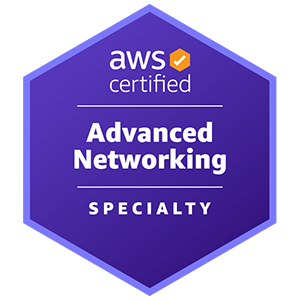



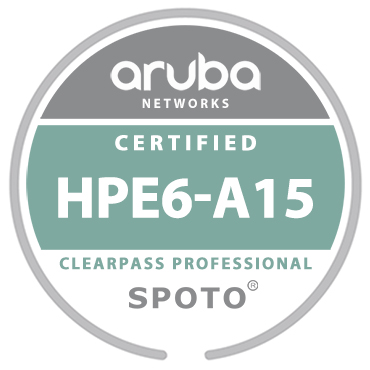
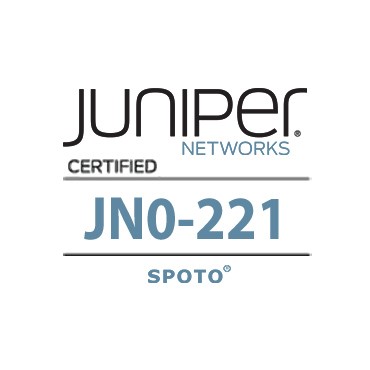

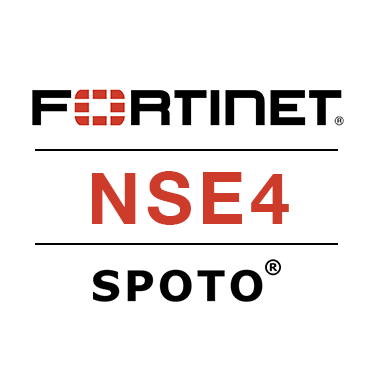
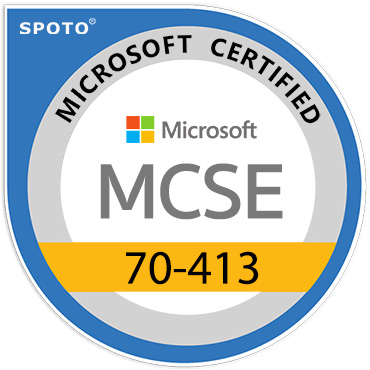

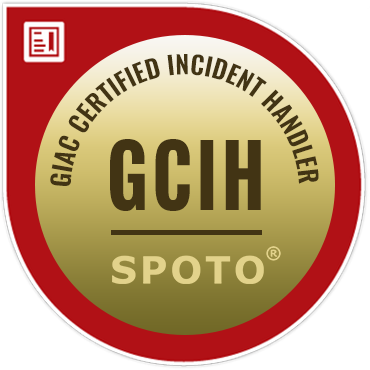
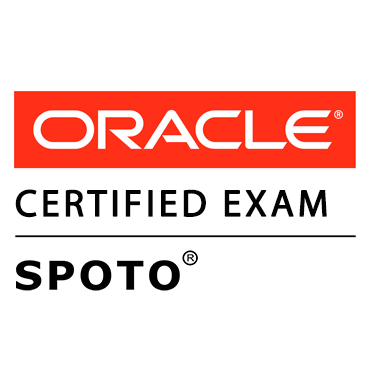
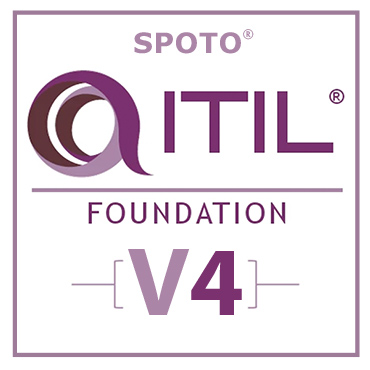
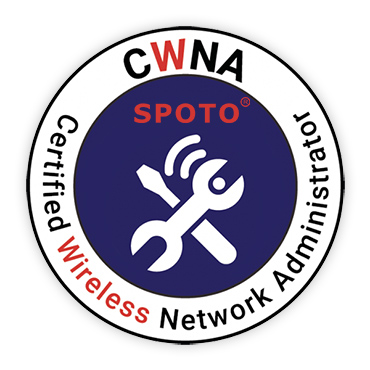



Comments